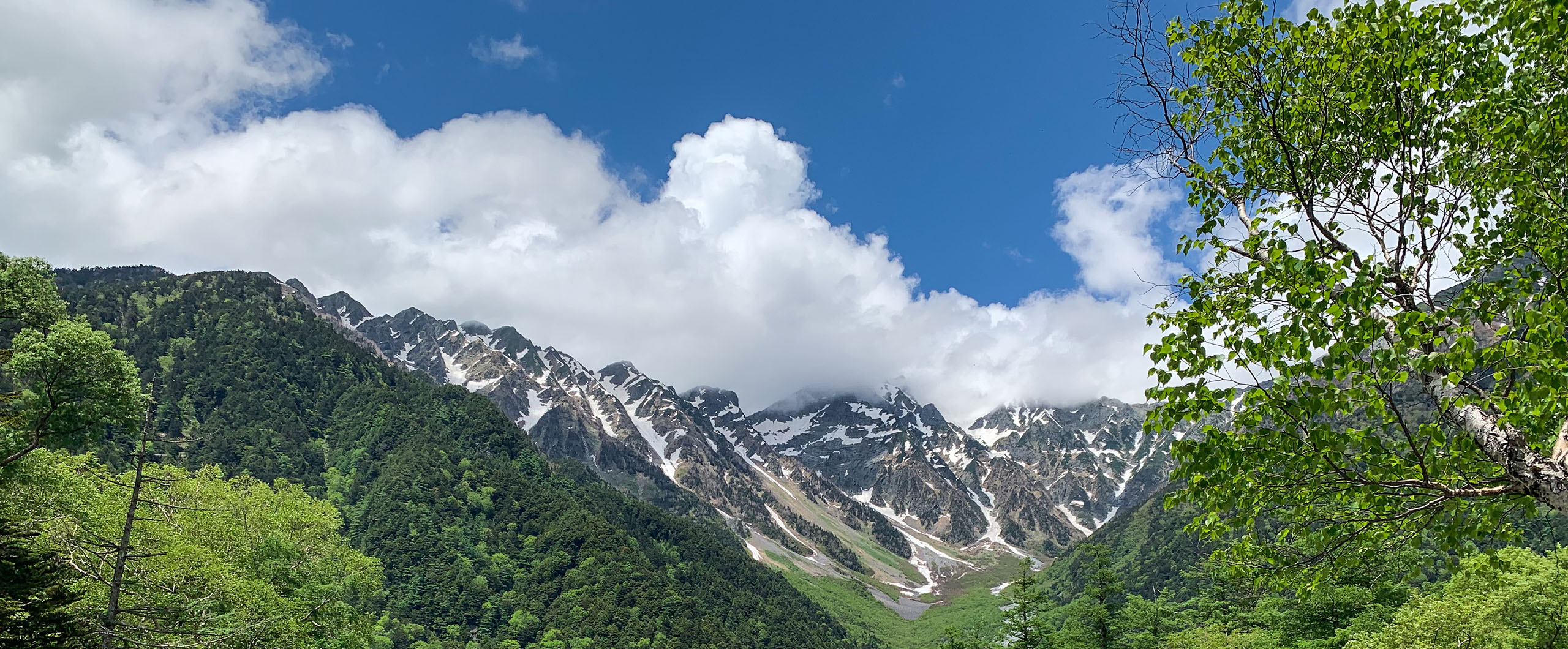
Kamikochi
About 1,500 metres above sea level, surrounded by snow-capped mountains twice as high, Kamikochi lives up to its name — which means “the land of the gods”.
Kamikochi is a flat-bottomed river valley that stretches for 15 kilometres through the Chubu Sangaku National Park. On the valley floor, the shallow Azusa River rolls over smooth, grey pebbles, its waters a remarkable, almost luminous shade of turquoise-blue. Twisted larch and willow-like chosenia grow by the water’s edge, while macaques scamper along the branches in forests of giant Japanese elm and yew. Looming over it all are the spectacular, snow-covered slopes and serrated peaks of the Japanese Alps, the gateway to some of the best mountain hikes to be had in Japan.
It’s difficult to talk about Kamikochi without resorting to cliché. “Stunning” hardly does justice to the sight of Kappabashi Bridge against its backdrop of Mount Hotaka. “Crystal-clear” doesn’t communicate the rippling greys, blues and greens that shimmer in the waters of the Azusa River. “Awe-inspiring” feels like an empty phrase when applied to volcanic Mount Yake, whose eruption in 1915 partially dammed the river and left withered trees in its wake. It still smokes to this day, as if to say, “I could do it again, you know. Just try me.”
Day hikers can wander grassy meadows dotted with elm trees, spotting kingfishers and flycatchers on their way to limpid pools. Those who stay a little longer will have peaks to conquer, mountain huts to hunker down in, and onsen hot springs from which to look up at the stars. This isn’t just the most beautiful place in Japan — it just might be the most beautiful place in the world.